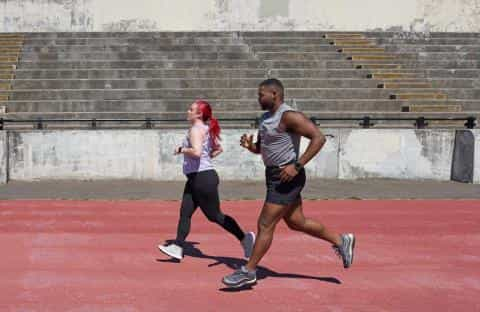
Perimenopause—the transitional phase leading up to menopause—can be a challenging time for many women. It’s often marked by a variety of symptoms that can affect your daily life, including sleep disturbances, cognitive changes, and shifts in body composition. Understanding these symptoms and how exercise can help manage them is crucial for navigating this period with greater ease and comfort. Here are four key truths about perimenopause symptoms and how incorporating exercise into your routine can provide relief.
The Symptom: One of the earliest and most noticeable symptoms of perimenopause is disrupted sleep. You might find it harder to fall asleep, stay asleep, or experience more frequent night sweats, which can significantly impact the quality of your rest.
How Exercise Helps: Regular physical activity can be a powerful tool in improving sleep quality. Exercise helps regulate your circadian rhythm and reduces anxiety, which can be contributing factors to sleep disturbances. Engaging in moderate aerobic activities, like brisk walking, cycling, or swimming, can promote deeper and more restful sleep. Additionally, incorporating relaxation techniques such as yoga or stretching in the evening can help calm your mind and prepare your body for sleep.

The Symptom: During perimenopause, you may experience elevated levels of cortisol, the body’s primary stress hormone. This increase can lead to feelings of stress, anxiety, and even weight gain around the abdominal area.
How Exercise Helps: Exercise is a natural stress reliever that helps regulate cortisol levels. Engaging in activities like running, dancing, or strength training can help manage stress and improve mood. Furthermore, regular exercise promotes the release of endorphins, which are natural mood enhancers. Incorporating mindfulness practices, such as meditation or deep breathing exercises, into your routine can also help manage stress and lower cortisol levels.
The Symptom: Many women report experiencing cognitive changes during perimenopause, including memory lapses, difficulty concentrating, and a general feeling of mental fog. These changes can be distressing and impact daily functioning.
How Exercise Helps: Regular physical activity has been shown to have positive effects on cognitive function. Exercise increases blood flow to the brain, supports the growth of new brain cells, and enhances neuroplasticity, which can help improve memory and concentration. Activities that challenge your brain and body, such as learning a new sport, practicing complex dance routines, or engaging in social exercise groups, can provide cognitive stimulation and help maintain mental sharpness.

The Symptom: Hormonal fluctuations during perimenopause can lead to a decrease in lean muscle mass and an increase in body fat, particularly around the abdomen. This change in body composition can affect your strength, metabolism, and overall physical health.
How Exercise Helps: Strength training is especially beneficial for counteracting muscle loss associated with perimenopause. Incorporating resistance exercises, such as weight lifting, bodyweight exercises, or resistance bands, can help build and maintain lean muscle mass. Additionally, combining strength training with cardiovascular exercises can boost your metabolism and help manage body weight. Aim for a balanced exercise routine that includes both aerobic and resistance training to support overall physical health and fitness during this transition.
Navigating perimenopause can be challenging, but understanding these four truths about the symptoms and incorporating regular exercise into your routine can make a significant difference in managing them. By improving your sleep, managing stress, supporting cognitive function, and preserving lean muscle mass, exercise can provide relief and enhance your overall quality of life during this transitional phase. As always, consult with your healthcare provider before starting any new exercise program, especially if you have underlying health conditions. Embracing a balanced and active lifestyle can empower you to handle perimenopause with greater resilience and vitality.
Discover More Content





